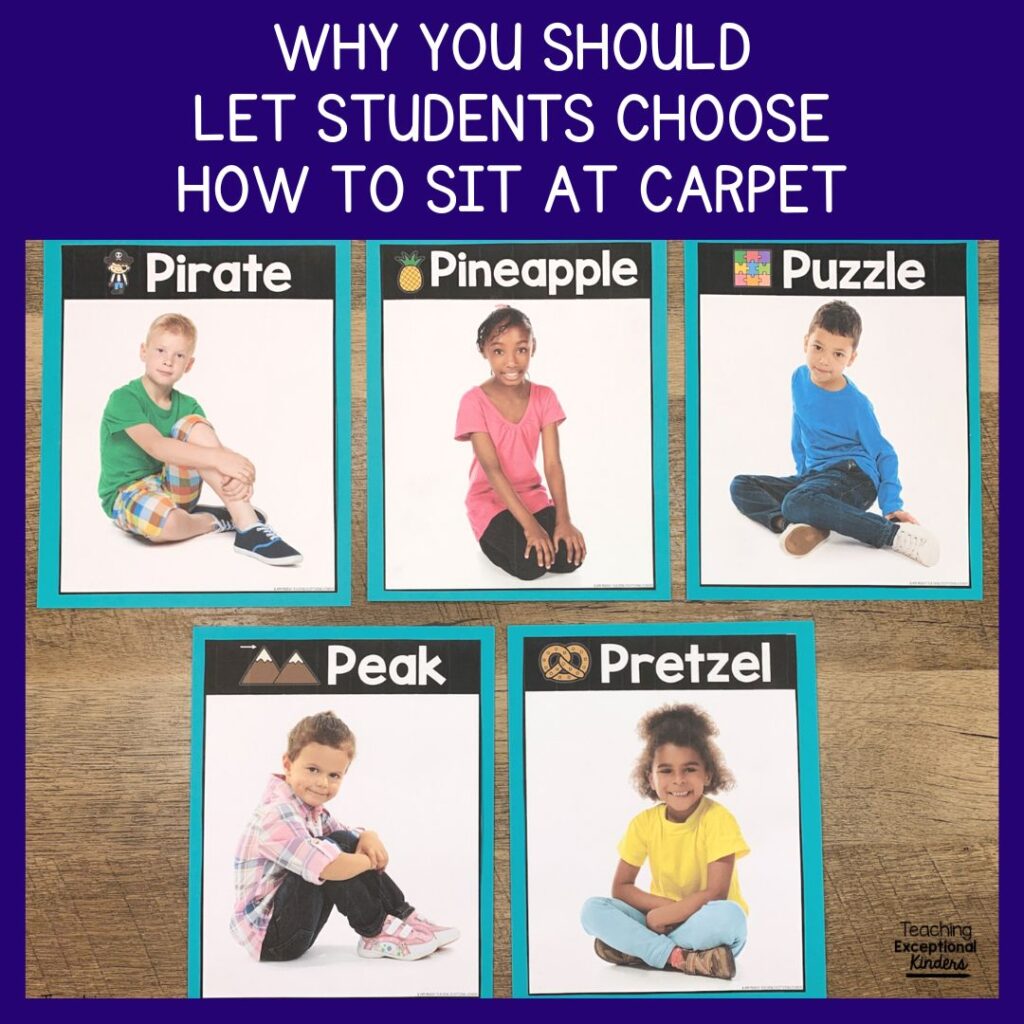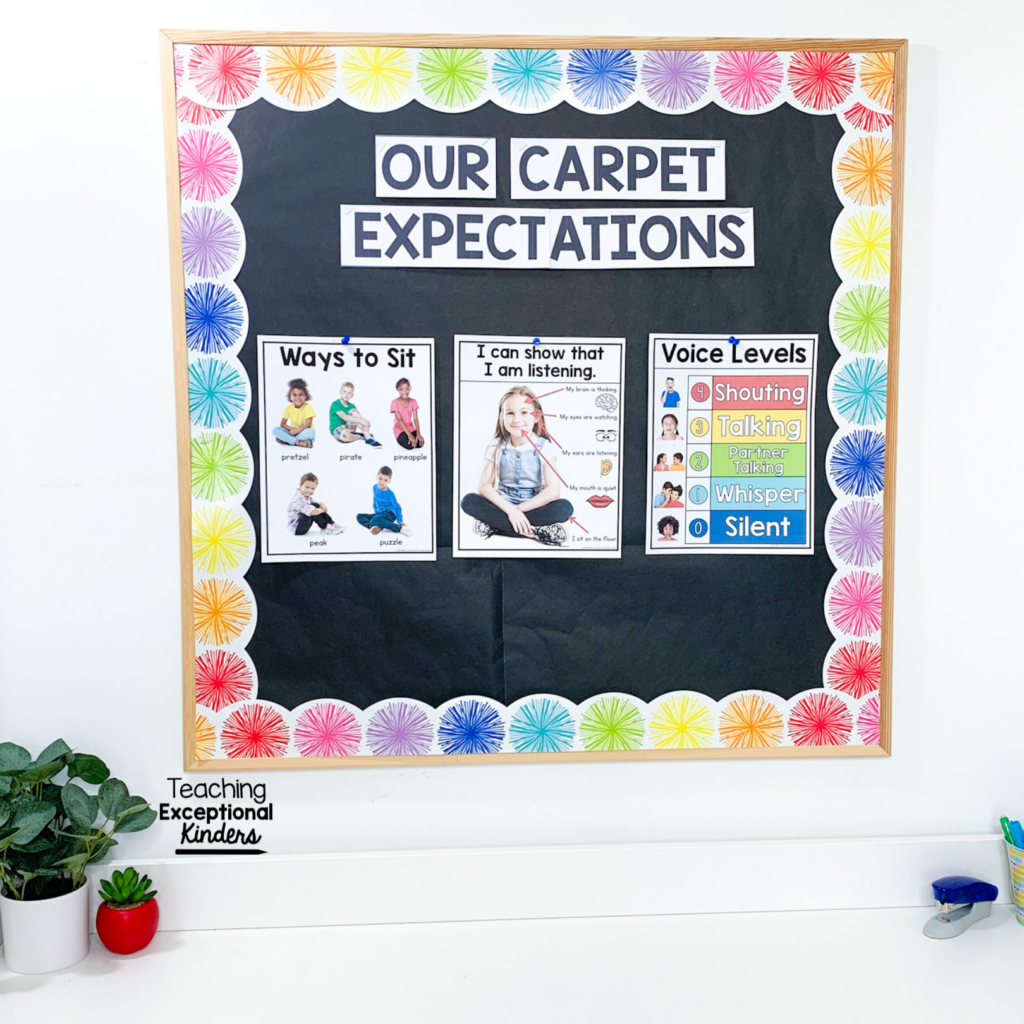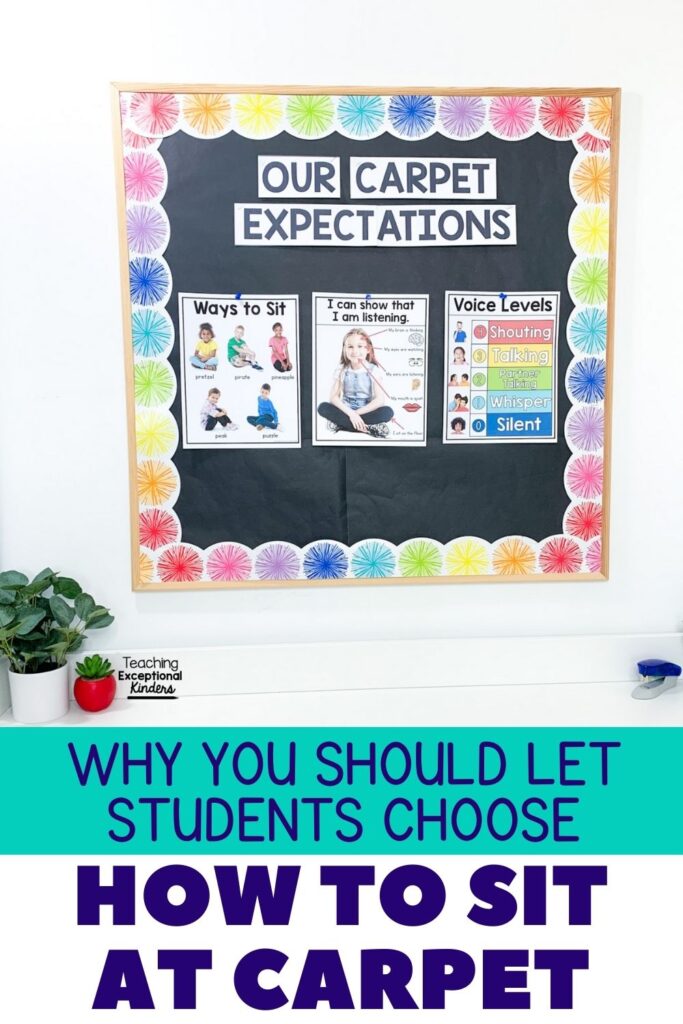Why You Should Let Students Choose How to Sit at Carpet Time
One of my least favorite things to hear a behavior specialist suggest is: “Have you tried giving them choices?” *insert eye roll* Why doesn't anyone give teachers choices? Do you want to do this irrelevant PD or do nothing in your classroom? If only, right? But there ARE some times when giving choices is super helpful. Carpet time is one of them. Keep reading to find out why it's so helpful to let students choose how to sit at carpet time!

5 Reasons to Let Students Choose How to Sit at Carpet Time
1. Physical Development
First and foremost, having one particular way to sit on the carpet can single out students with physical differences. Whether it’s due to disability, sensory processing, or motor skill development, you will likely have students in your class who won’t be able to physically sit “criss-cross applesauce.” When students can choose how they sit at carpet time, they won’t feel singled out if they can’t sit in a certain way.
2. Clothing
The clothing that a student wears can really impact their ability to sit in a specific way at carpet time. We all know that dresses and skirts can cause a bit of a modesty issue, but that’s not all! Students might have jean rivets hitting in just the wrong spot or sandals with buckles that hurt their ankles when sitting cross-legged. Since students are the ones wearing their outfits, they’re the best judge of what’s comfortable for them when sitting on the floor.
3. Allow Control (with Boundaries)
Does it really matter if all kids are sitting exactly the same way on the floor? Letting students choose how to sit can give them some control in a situation that might be less than ideal for them. Carpet time is when your class is physically at its closest and students are sitting on the floor for a bit of time. This isn’t necessarily going to be your students’ favorite part of the daily routine! Giving them a choice of how to sit can make them feel like they have some say in the situation.
However, that doesn’t mean carpet time needs to be a free-for-all! It’s important to outline expectations for sitting on the carpet so they aren’t impacting the people around them. I like to give students a set of options to choose from, which I’ll share later in this post.
4. Reduce Redirection
If there is only one “right way” to do something, things will be done “wrong” more often. When you allow students to choose how to sit at carpet time, there will be more “right ways” to sit. You will find yourself redirecting your students much less often.
By giving your students options to choose from, it will also change the tone of your redirection. Instead of telling a fidgety student to sit criss-cross applesauce, you can remind them to choose a comfortable option from the list of choices. Giving them this choice helps to avoid potential attempts at a power struggle.
5. Focus on What Matters
When a student has to sit in an uncomfortable, required seating position for any length of time, chances are that they really won’t be focusing on the class discussion. They’ll be focusing on maintaining the “correct” sitting position, no matter how uncomfortable they are. When students are allowed to quietly switch from one position to another, they will remain comfortably seated and it will be easier for them to listen to the actual content of carpet time.
My Favorite Options for Sitting on the Carpet
As I mentioned above, I like to give students five options for sitting on the carpet. These options keep students’ legs, feet, and hands occupied so they are less likely to bother the kids around them.

You might see some seating options that you know by a different name. I chose to have all of the options start with P so they are easier for students to remember.
- Pretzel: You likely know this as “Criss Cross Applesauce”, where students sit with their legs crossed and their hands in their laps.
- Pineapple: Students sit with their legs and feet under them, hands on knees. If students choose this option, it’s a good idea to let them sit at the back of the carpet so they don’t block other students.
- Puzzle: Some teachers might refer to this as “Mermaid” sitting. This is when students sit with legs bent to the side and hands in the lap. It’s a great option when wearing skirts!
- Pirate: Students can hold one leg with the other leg bent underneath. This one-legged sit often reminds students of a peg-legged pirate.
- Peak: Inspired by a mountain peak, students bend both knees and hug them.
Visuals for How to Sit at Carpet Time
Once you have introduced your students to the different options for sitting at carpet time, it’s helpful to have visual reminders! Not only does this help your class remember the options, but it also makes it easier for you to redirect students who aren’t sitting appropriately at carpet time. You’re able to quickly get their attention and point to the seating options without missing a beat in your discussion.

To make it easier for you to give students a choice of how to sit at carpet time, I’ve created a resource with several helpful visuals! It includes sitting posters with example photos of real children, which create a great model for the class. This resource includes other helpful visuals to remind your students of carpet time expectations, including voice level and listening charts. Just head over to the Teaching Exceptional Kinders shop or TPT to take a closer look at everything included in this carpet time resource!

Save These Tips for Carpet Time
If you’d like to come back to these tips and resources later, be sure to save this post! Just add the pin below to your favorite teaching board on Pinterest. You’ll be able to quickly find these tips when you’re looking for ways to keep your students engaged in carpet time.

Amy
SITE DESIGN BY LAINE SUTHERLAND DESIGNS

